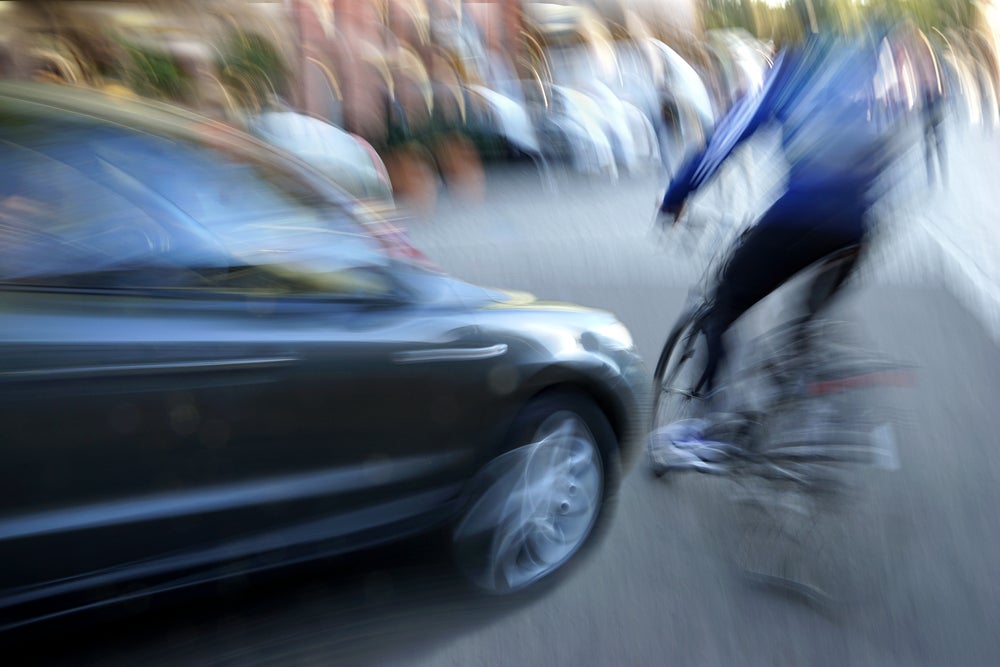There's a Database Where Cyclists Call Out Dangerous Drivers

Photo: Shutterstock.com
In 2014, there were 50,000 injured cyclists and 726 fatalities on U.S. roads. With more drivers and more distractions, the chances of having an incident while riding your bike continues to grow. In an effort to minimize these incidents, one man has created Closecalldatabase.com, a website dedicated to giving riders a way to make it safer for others around them.
Created by Boulder, Colo. resident and cyclist Ernest Ezis in December of 2014, the idea was to give riders a method for pushing back against drivers who carelessly put their lives at risk, something Ezis has experienced himself. “I was really bothered by the idea that a driver could choose to arbitrarily gamble with my life, intentionally passing me within inches at 50 mph and there seemed to be nothing that I could do about it,” he remembers “That was one of several problems that I wanted to solve: to stop them from ‘getting away with it’, to find a way to hold them accountable for their actions.” Ezis thought about creating the database for nearly 18 months, and then a close call in November of 2014 finally put him in motion to create it.
The Power of Data
Until his creation, there was no way to aggregate the incidents of driver aggression. This was something Ezis felt was important to solve. “I believe it’s important that the cycling community coalesces around a single data repository and maximizes the value of the data being collected. Posting about ‘some ahole driver’ on Facebook should not be confused with doing something. That simply scatters the data and diminishes its potential—it has little or no downstream value. I encourage cyclists to think of the Close Call Database as a central data store for our community that can produce valuable data and yield new insights and strategies to improve cycling safety.
Ezis does not look at his database as the only answer. Rather, he sees the collected data as a way to boost the efforts of those already advocating for better cycling safety. “It can fill a valuable role by informing and feeding downstream groups and organizations who are already in place advocating for cyclists and cycling. The data being collected can put muscle behind those efforts and make an effective case about the need for stronger laws to protect vulnerable road users,” he says.
Reporting an Incident
After logging in (you can create a free account or use Strava), the site uses your zip code to give you the most recent reports within 60 miles of the center of your zip code. If you want, you can also view all incidents reported across the U.S. Currently, the site has over 1,000 users, though Ezis expects that number to grow quickly with the better weather leading athletes to get back on the roads.
At this point, there is no app, but the site is fairly mobile friendly so you can report an incident from your phone or you can do it on your computer after you get home. To ensure that not every three foot violation is reported, which would really clog up the database, there is a disclaimer asking you to only report aggressive incidents. As the site says, “Accidents happen. Drivers make mistakes and cyclists do to. There is little we can do about that.“ An incident is defined as when the action taken is intentional.
Creating the report is simple. A large box gives you room to describe what happened, boxes to add the date and time, and then there is a series of drop down menus to categorize the threat assessment (belligerent, threatening, aggressive, careless and just plain stupid) and danger assessment (extremely, very, dangerous, somewhat or cause for concern) and then more boxes to add the color, make, model, description and license plate. If you have a photo, you can email Ernest via the site and he will add it to your report.
The Legal Potential
Reports have been used to influence police action and citations have been issued as a result of the reports, but to date they have not been used in a court case, though Ezis knows that day is not far off. “I know the day is coming when I will be contacted and one or more of the reports will be used in the courtroom. While I am intellectually prepared for that, it will be a very emotional event for me and it will most likely mean that yet another cyclists will has been badly injured or killed. It’s a terrible thing that we need the database at all.”